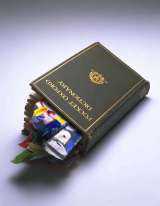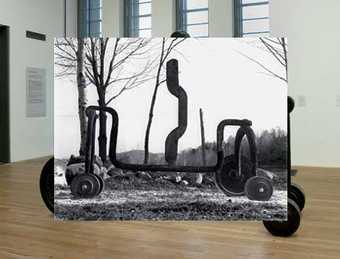
Richard Wentworth Tract (from Boost to Wham) 1993
Tate Liverpool is presenting the largest and most comprehensive exhibition to date devoted to British sculptor Richard Wentworth. The exhibition includes work in many media from the last thirty years as well as new work made especially for Tate Liverpool.
Since the late 1970s, Richard Wentworth has quietly emerged as one of the key figures in radically transforming the way we think about sculpture and the work of art. Shunning the monumental gesture, Wentworth finds his materials in the everyday world, a world of things and thoughts already ready made.
In conversation with the critic Stuart Morgan, Richard Wentworth said: 'I find cigarette packets folded up under table legs more monumental than a Henry Moore. Five reasons. Firstly the scale. Secondly, the fingertip manipulation. Thirdly, modesty of both gesture and material. Fourth, its absurdity and fifth, the fact that it works.'
Whether isolating an image of this existing world in one of the thousands of photographs that constitute the series Making Do and Getting By, or combining, transforming or manipulating found objects not normally associated with art such as dictionaries, sweet wrappers, books, plates and buckets in his sculptures, Wentworth teases us into a new awareness of the everyday. Objects as much as ways of mind are disrupted and subverted, allowing the thousands of tiny gestures and things that constitute the world around us to be read in new and unexpected ways. Works featured in this exhibition include False Ceiling 1995, Spread 1997 and Mirror Mirror 2003.
Richard Wentworth was born in 1947. He studied at Hornsey College of Art, London, from 1965, and worked with Henry Moore in 1967. He studied at the Royal College of Art, London between 1968-70. Richard Wentworth was awarded the Mark Rothko Memorial (1974) and the Berlin DAAD Fellowship (1993/94). He taught at Goldsmith's College from 1971 to 1987, worked in New York and now lives in London.


